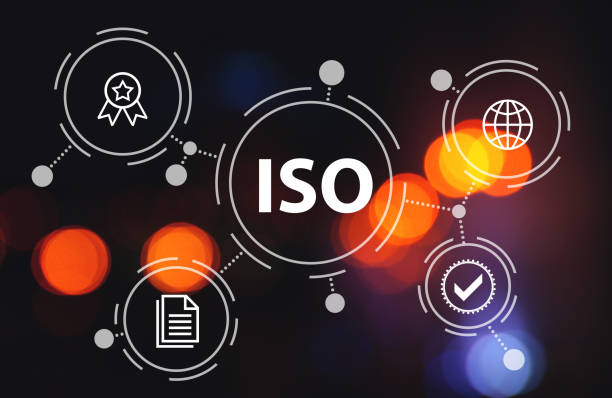Introduction to the World of SEO and Its Importance

What is SEO and Why is it Crucial for Your Business?
#SEO (Search Engine Optimization) is a set of techniques and strategies used to improve the ranking of a website in search engine results, such as Google, Bing, and Yahoo.
The main goal of #SEO is to increase organic (non-paid) website traffic by improving rankings in search results.
The importance of #SEO for businesses in today’s digital world is undeniable.
In fact, #SEO can act as a powerful tool to increase website visibility, attract potential customers, increase sales, and ultimately, grow the business.
Given that most internet users use search engines to find information, products, and services they need, websites that rank high in search results have a better chance of attracting visitors and converting them into customers.
#SEO not only helps improve website ranking, but also helps create a strong and sustainable brand by improving user experience, increasing website credibility, and creating valuable content.
In short, #SEO is a long-term investment that can bring significant returns to your business.
By implementing the right #SEO strategies, you can increase your website traffic, attract new customers, and ultimately, boost your business.
Did you know that your company’s website is the first point of contact for 75% of potential customers?
Your website is the face of your brand. With **Rasaweb’s** corporate website design services, create an online presence that builds customer trust.
✅ Create a professional and lasting image of your brand
✅ Attract target customers and increase online credibility
⚡ Get free advice from **Rasaweb** experts!
Keyword Research: The Cornerstone of SEO Strategy

How to Find the Right Keywords for Your Website?
Keyword research is one of the most important steps in an SEO strategy.
Choosing the right keywords helps you optimize your website content based on the needs and interests of your target audience, resulting in more organic traffic.
To begin keyword research, you should first create a list of keywords related to your business.
You can use various tools such as Google Keyword Planner, Ahrefs, SEMrush, and Moz Keyword Explorer to find relevant keywords and check their search volume.
When choosing keywords, consider the following:
- Relevance: Keywords should be directly related to your products or services.
- Search Volume: Keywords should have sufficient search volume to drive significant traffic to your website.
- Competition: Keywords should have a reasonable level of competition so you can achieve a good ranking in search results.
In addition, pay attention to keyword diversity.
Try to use main keywords, long-tail keywords, and LSI (Latent Semantic Indexing) keywords to cover the search scope of your audience.
With careful research and selection of appropriate keywords, you can implement your SEO strategy more effectively and achieve better results.
On-Page SEO

Key On-Page SEO Techniques to Improve SEO Ranking
On-Page SEO involves a set of actions you take within your website to improve its ranking in search results.
These actions include optimizing titles, meta descriptions, URL structure, content, images, and internal links.
Titles and meta descriptions are the first things users see in search results.
Therefore, you need to make sure they are attractive, relevant, and contain the main keywords.
The URL structure should also be simple, readable, and contain keywords.
Your website content should be valuable, relevant, unique, and optimized for keywords.
Images should also be optimized (reduced file size, using alt text) to increase website loading speed and help search engines understand the content of the images.
Internal links also help search engines better understand your website structure and identify more important pages.
In the table below, we have addressed an example of on-page optimization:
| Element | Description | Optimization Tips |
|---|---|---|
| Page Title (Title Tag) | A short text that appears in the browser tab and search results. | Contain the main keyword, be attractive, and less than 60 characters. |
| Meta Description | A summary of the page content that appears below the title in search results. | Contain the main keyword, be persuasive, and less than 160 characters. |
| Headings | Use H1 to H6 tags to organize content. | H1 tag for the main title of the page, use keywords in headings. |
| Content | The main text of the page. | Unique, valuable, relevant to the main keyword, and SEO optimized. |
| Images | Use images related to the content. | Optimize image size, use Alt Text containing the keyword. |
| Internal Links | Linking to other related pages on the website. | Helps search engines understand the site structure and increase the credibility of pages. |
By implementing these techniques, you can improve your on-page optimization and increase its ranking in search results.
In this case, your SEO will be more successful.
Off-Page SEO and Link Building

The Role of Link Building in SEO and Backlink Building Strategies
Off-Page SEO includes a set of actions you take outside of your website to improve its credibility and ranking in search results.
The most important part of off-page SEO is link building.
Link building means getting links from other websites to your website.
The more the number and quality of links pointing to your website, the higher the credibility and ranking of your website in search results.
To build backlinks, you can use various strategies such as creating valuable and shareable content, participating in online forums, writing guest posts on related blogs, and building relationships with influencers.
When link building, consider the following:
- Link Quality: Links should be from reputable websites related to the topic of your website.
- Link Diversity: Links should be from various sources (blogs, forums, social networks, etc.).
- Anchor Text: The anchor text should be relevant to the destination page.
Link building is a time-consuming and difficult process, but it is essential to improving your website’s ranking in search results.
By implementing the right link building strategies, you can increase the credibility of your website and attract more organic traffic.
Generally, SEO outside includes things that are done outside the website for optimization.
Are you dissatisfied with the low sales of your online store?
Rasaweb is your solution for having a professional and high-selling online store.
✅ Significant increase in sales and revenue
✅ Easy and enjoyable shopping experience for customers
⚡ Get a free consultation from Rasaweb right now!
Quality Content: The King of SEO

How to Create Engaging, Valuable, and SEO-Optimized Content?
Quality content is one of the most important factors in SEO.
Search engines like Google rank websites that provide valuable, relevant, and unique content higher.
To create quality content, you must first know your target audience and understand their needs and interests.
Then, create content that answers their questions, solves their problems, and provides valuable information.
Your content should be engaging, readable, and optimized for keywords.
Use titles, subtitles, images, videos, and other multimedia elements to make your content more attractive.
Also, make sure your content is grammatically correct and free of errors.
In addition, your content must be unique.
Avoid copying other people’s content and try to create content that doesn’t exist anywhere else on the internet.
By creating quality content, you can increase your website’s organic traffic, increase your credibility in your industry, and attract new customers.
In this case, your SEO will be useful.
User Experience (UX) and Its Impact on SEO

How to Improve Website User Experience and Increase SEO Ranking?
User experience (UX) refers to the feeling and experience that users have when visiting your website.
If users enjoy your website, they will stay on it longer, view more pages, and are more likely to return.
These factors show search engines that your website is valuable and should be ranked higher.
To improve your website’s user experience, you should pay attention to factors such as website loading speed, website design, navigation, usability, and content.
Your website should load quickly, have an attractive and user-friendly design, have easy navigation, and provide valuable content.
Also, your website should be optimized for different devices (computer, tablet, mobile phone).
By improving your website’s user experience, you can increase your website’s organic traffic, reduce bounce rate, and increase conversion rate.
These factors help improve your website’s SEO ranking and ultimately lead to the growth of your business.
SEO and user experience are closely related.
Technical SEO and Website Infrastructure

Optimizing Website Structure and Code for Search Engines
Technical SEO includes a set of actions you take to optimize the structure and code of your website so that search engines can easily crawl, index, and rank your website.
These actions include optimizing the robots.txt file, XML sitemap, URL structure, website loading speed, mobile compatibility, website security (HTTPS), and schema markup.
The robots.txt file tells search engines which pages of your website should not be crawled.
The XML sitemap helps search engines better understand the structure of your website.
The URL structure should be simple, readable, and contain keywords.
The website loading speed should be high so that users have a good experience.
Your website should be optimized for different devices (computer, tablet, mobile phone).
Your website should use the HTTPS protocol to ensure user security.
Schema markup helps search engines better understand the content of your website.
In the table below, we have addressed an example of technical SEO:
| Technical SEO Aspect | Description | Improvement Solutions |
|---|---|---|
| Site Speed | The loading speed of the site pages. | Optimize images, use CDN, enable Gzip compression. |
| Mobile Compatibility | Proper display of the site on mobile devices. | Use Responsive Design. |
| XML Sitemap | A file that introduces the site structure to search engines. | Create and submit a sitemap to Google Search Console. |
| Robots.txt File | A file that restricts search engine access to certain parts of the site. | Review and edit the Robots.txt file to prevent indexing of unnecessary pages. |
| HTTPS | Use the secure HTTPS protocol to encrypt information. | Install an SSL certificate and transfer the site to HTTPS. |
| Schema Markup | Adding structured code to site pages to better understand the content by search engines. | Use Schema.org to mark up various types of content such as articles, products, and events. |
By implementing these techniques, you can improve your website’s technical SEO and help search engines better understand and rank your website.
This will improve your website’s SEO.
Competitor Analysis and SEO Strategies

How to Analyze Competitors and Model Their SEO Strategies?
Competitor analysis is one of the most important steps in an SEO strategy.
By analyzing competitors, you can identify their strengths and weaknesses, understand their SEO strategies, and model them.
To analyze competitors, you must first identify your main competitors.
You can use search engines to find websites that rank for similar keywords to you.
Then, carefully review the competitor’s websites and pay attention to factors such as content, link building, technical SEO, and user experience.
Use various tools such as Ahrefs, SEMrush, and Moz to analyze competitors.
These tools help you check competitor keywords, backlinks, organic traffic, and other important information.
By analyzing competitors, you can identify their successful SEO strategies and model them.
Also, you can identify their weaknesses and use them to improve your SEO strategy.
In short, it can be said that SEO is not just about you.
Are you tired of losing customers due to the poor design of the online store? With Rasaweb, solve this problem forever!
✅ Increased sales and conversion rate of visitor to customer
✅ Smooth and attractive user experience for your customers⚡ Get a free consultation
Measuring and Analyzing SEO Results

How to Measure SEO Performance and Improve Strategies?
Measuring and analyzing SEO results is one of the most important steps in an SEO strategy.
By measuring and analyzing SEO results, you can evaluate the performance of your strategy, identify its strengths and weaknesses, and improve your strategy.
To measure and analyze SEO results, you can use various tools such as Google Analytics, Google Search Console, Ahrefs, SEMrush, and Moz.
These tools help you check your website’s organic traffic, keyword ranking, bounce rate, conversion rate, and other important information.
By analyzing this information, you can evaluate the performance of your SEO strategy and identify its strengths and weaknesses.
Then, you can improve your strategy and achieve better results.
For example, if your website’s organic traffic has not increased, you may need to review your keywords, improve your content, or do more link building.
If your website’s bounce rate is high, you may need to improve your website’s user experience.
Also, SEO improves over time with your analysis.
The Future of SEO and Modern Techniques

Trends and Changes Ahead in SEO in the Coming Years
The world of SEO is constantly changing, and techniques that are effective today may no longer work tomorrow.
To succeed in SEO, you must always be up-to-date and aware of the latest trends and changes.
Some important trends in SEO include:
- Artificial Intelligence and Machine Learning: Artificial intelligence and machine learning are changing the way search engines work.
Search engines use these technologies to better understand content and provide more relevant search results to users. - Voice Search: With the increasing use of voice devices such as Google Home and Amazon Echo, voice search has become more important.
To optimize your website for voice search, you should use long-tail and conversational keywords. - Mobile-First Indexing: Google now indexes websites based on their mobile version.
Therefore, make sure your website is optimized for mobile devices.
Given these trends, to succeed in SEO, you need to focus on creating quality content, improving user experience, and optimizing your website for mobile devices.
Frequently Asked Questions
| Question | Answer |
|---|---|
| What is SEO? | SEO, or Search Engine Optimization, is a process to increase the quality and quantity of website traffic by improving the site’s ranking in natural (organic) search engine results, such as Google. |
| What are the main types of SEO? | SEO is divided into three main categories: On-Page SEO, Off-Page SEO, and Technical SEO. |
| What does On-Page SEO include? | On-Page SEO includes optimizing elements within the website, such as keywords, title tag, meta description, content, URL structure, images, and internal links. |
| What is Off-Page SEO? | Off-Page SEO refers to activities outside the website that help improve its ranking, such as backlink building, social media marketing, and brand mentions. |
| What is Technical SEO? | Technical SEO deals with optimizing the technical aspects of the website to help search engines crawl and index better. This includes site speed, mobile-friendliness, site structure, sitemaps, and Robots.txt files. |
| What role do keywords play in SEO? | Keywords are terms that users enter into search engines. The correct and targeted use of relevant keywords in the content and elements of the site helps search engines understand the subject of your page and display it for related searches. |
| What is a backlink and why is it important? | A backlink, or inbound link, is a link from one website to another. Backlinks act as a “vote of confidence” from other sites for search engines and play an important role in the credibility and increased ranking of the site, especially if they are from reputable sites. |
| What effect does quality content have on SEO? | Quality, relevant, comprehensive, and unique content not only attracts and retains users, but also shows search engines that your page is valuable. This helps improve ranking, reduce bounce rate, and increase user time on the site. |
| Why is site loading speed important for SEO? | Site loading speed is an important ranking factor for Google. Faster sites provide a better user experience, have a lower bounce rate, and are preferred by search engines. |
| Is SEO a one-time process? | No, SEO is a continuous and long-term process. Search engine algorithms are constantly changing, competition is increasing, and site content also needs to be updated. Therefore, SEO requires continuous monitoring, analysis, and optimization. |
And other services of Rasa Web advertising agency in the field of advertising
Smart Marketing Automation: Transform SEO ranking by leveraging real-world data.
Smart Reportage: A novel service to increase sales through user experience customization.
Smart Sales Automation: Professional optimization for online growth using user experience customization.
Smart Marketing Automation: A dedicated service for campaign management growth based on user experience customization.
Smart Content Strategy: A professional solution to increase sales by focusing on an SEO-driven content strategy.
And more than a hundred other services in the field of internet advertising, advertising consulting, and organizational solutions
Internet Advertising | Advertising Strategy | Reportage Advertising
Resources
SEO predictions in 2024
, Site SEO training in 2024
,SEO trends in 2024
,SEO trends in 2024
? Rasaweb Afarin, the leading digital marketing agency, paves the way for your business success. From professional online store design to comprehensive SEO strategies, we are ready to distinguish your brand in the online space and take it to the peak.
📍 Tehran, Mirdamad Street, next to the Central Bank, Southern Kazerun Alley, Ramin Alley, No. 6


